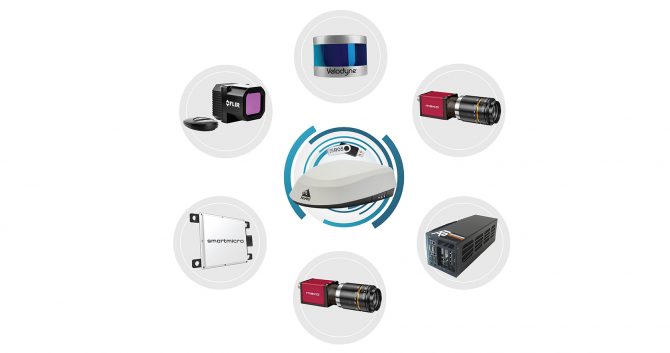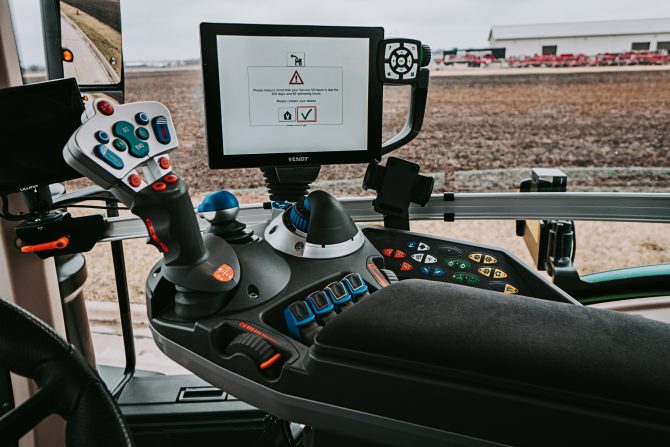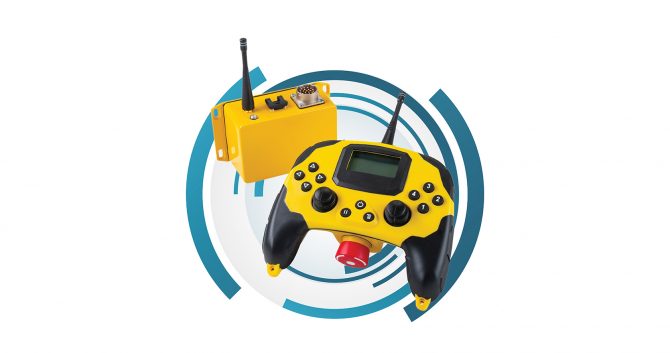
Hexagon/Novatel integrates autonomous solutions for farm tractor OEMs
By Sohail Kamal, West Coast Correspondent
Automation / Robotics Electronics Engineering Software Wireless Engineering Environmental IoT automation autonomous IoT solutions
Source: NovAtel
We hear a lot about self-driving vehicles. Technology has arrived that makes their deployment affordable and, likely one day, straight forward. Self-driving cars and trucks have been put through rigorous testing over the years and it will only be a matter of time before they become mainstream.
For years, Calgary-based NovAtel, part of Hexagon’s Autonomy & Positioning division, and part of the Swedish Company, Hexagon, has been focusing on automation in agriculture, providing OEM tractor manufacturers with technology like their SMART7 antenna which detects tractor position and directs tractor maneuvers. The impetus for building autonomous tractors came from the recognition of how hard farmers have to work, a desire to deliver the full potential of sensors, and accurate positioning capability to enable independent farm operations. West Coast Report recently interviewed Mike Martinez, segment manager, agriculture at Hexagon | NovAtel, about its autonomous tractor technology and questioned how they plan to navigate through some challenging safety considerations.
The agricultural industry has not yet been able to enjoy the benefits of automated tractors, according to Martinez.
“While there are some developers of autonomous custom-built tractor and agricultural machinery platforms, autonomous tractors have not yet been released mainstream. Therefore, significantly less than 1% of all agricultural tractors produced annually [are autonomous],” Martinez says.
Tractors are adaptive to vast areas
The reasons for an autonomous tractor for farmers seem obvious. Tractors are adaptive to vast areas, for multiple fields and for multiple crops, and farm chores can be tedious and never-ending. Making matters worse, the farming population has been shrinking, and the work is often in remote, isolated fields where workers are hard to come by. NovAtel wants to remedy farmer shortage by producing equipment that will be as multi-tasking and flexible as farmers themselves.
There is a strong consensus that self-driving cars can save countless lives, so what about agricultural vehicles? Designing an agricultural self-driving tractor is not as complicated as a self-driving car, which has to interact with multiple fast-moving vehicles, slow-moving pedestrians, bikes, and strollers, not to mention emergency vehicles, unscheduled road closures and diversions. A typical farm environment is much simpler, but this is what Martinez had to say.

Source: NovAtel
“Safety is obviously a significant concern. Like the automotive market, the identification and design of the safety system for agricultural machinery will take some time for the global industry to agree upon,” he says. “Like anything, the careful balance between functionality and affordability must be considered.”
The challenge arises when one considers any farm that might have conceivably have children nearby. Does the tractor recognize humans amongst crops? Autonomous tractors need to make decisions electronically and mathematically in order to react, keep safe, and keep people out of harm. There are a lot of strategies involved in accident prevention, but the best strategies remain human guidance and vigilance.
“[Machines can] either incorporate a safety operator onboard or are closely monitored in controlled environments offboard,” Martinez says.
Applying technology to off-road markets
NovAtel has more than 10-years of experience in autonomy, with hundreds of platforms built. The firm is now taking this experience and applying it to off-road markets, where they already provide positioning solutions for autonomous and semi-autonomous machinery. NovAtel’s stated competitive advantage is its experience and competency in positioning and autonomy that is used to satisfy customer’s needs, and the tractor is an ideal utility to test this technology.
“We don’t provide it to the end-customer, we tailor our services to the OEM manufacturers. Here we’ve fashioned a tool, a very advanced tool, to educate the manufacturers as to what type of perception sensors will be used and how they will be integrated with the smart software that will bring them into working together.”

Source: NovAtel
A tractor needs an incredible amount of intelligence to know what to do when confronted with a person or an object. The NovAtel team has sorted out the types of sensors required to support a variety of tasks.
“Vehicle control, position, perception, path planning…must all work together flawlessly. There are pieces that different manufacturers will concentrate on, there are specialties that integrators will specialize in, like path planning, or the decision-making process. But, they may not have that full technical competency yet to tie it all together,” explains Martinez.
This is a competitive advantage that they hope to harness to yield even greater success: the ability to successfully integrate all the options and data to make this complex technology intelligently useful. To learn more about NovAtel’s agriculture autonomy capabilities, go to novatel.com/ag-autonomy, or take a virtual tractor tour via their 3D interactive app.
